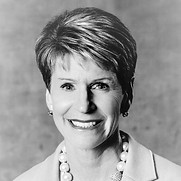
Supply Chain – The New Thought Leadership Retailers Want from Suppliers

Jennifer Ceslak
EVP, Strategy & Business Consulting

Stuart Magloff
EVP, MPG Supply Chain

Pat Mooney
VP, HBC & Non Foods, Wakefern
Constant consumer demand shifts. Manufacturing and shipping disruptions. Unprecedented and extended cough/cold/allergy seasons. With complexity and volatility the rule of the day, retailers large and small are keenly looking to improve technology and processes to make sure they have merchandise when they need it, where they need it, and in the quantity they need it.
There is tremendous focus on improved supply and demand forecasting, with end-to-end transparency and risk monitoring to avoid shortages and overstocks and ensure business continuity both for routine and seasonal businesses. And many retailers are looking to forward-thinking suppliers to provide the thought leadership and collaboration needed to rein in costs while achieving an agile and resilient supply chain. We sat down with Pat Mooney, Vice President, HBC & Non Foods, Wakefern, Stuart Magloff, EVP, MPG Supply Chain, and Jennifer Ceslak, EVP, Strategy & Business Consulting to get both the retailer and supplier points of view on the path ahead.
What’s at stake in terms of relationship when supply chain falters?

Pat Mooney:
Interestingly enough, I think the biggest relationship impact is between the retailers and their customers. Retailers interface with customers on a day-to-day basis, and so this is where the greatest overall risk lives. Customer disappointment typically takes place at shelf (at the retailer or through a customer discussion with a retail associate), not directly with the supplier. Customer expectations are always high in the Grocery class of trade. That said, customers will advocate for and provide loyalty to retailers they can trust. What is at risk in a supply-constrained environment is the relationship built with each of those customers, who trust that we will have -- in stock -- the items needed to take care of their family.
For the supplier, I believe the greatest risk is that out-of-stocks can lead the customer to quickly switch if a like item trade-off option is readily available. This means that suppliers must be at least as good as their competitors in terms of filling retail orders, or they stand to lose.

Jennifer Ceslak:
I agree. And I would just add that supply chain is truly new “thought leadership” opportunity for suppliers, so there is a big risk for those suppliers who lag behind. Demonstrating thought leadership in this area can absolutely help first-movers gain a competitive advantage.
Taking the retailer perspective, how should suppliers think differently about supply chain to provide value to their retail partners?

Pat Mooney:
When suppliers really start to focus on their end consumers, everyone typically wins. When suppliers prioritize specific retailers over others, the end consumer is at risk of losing out. Suppliers need to be nimble, think differently, and be willing to invest in the short term to ensure customers are getting product. We want to see best practices that ensure we can have a stronger response and preparedness for customers and end users in the future. For example, suppliers should look at their risks and bottlenecks in production, ensuring there’s a level of duplication in the event of catastrophe, and have a plan for how to cull down supplier product ranges to cover the most important items and commodities.
Is there a best-in-class example you can provide of a supplier who’s made certain changes that are benefitting both their business and that of the retailer?

Pat Mooney:
This may seem like a simple example, but it was one that was significant to our organization. We had a supplier situation where we were basically getting no product. As we continued to work with them and probe their logistics, we developed new processes to review product availability across the ENTIRE network of logistics, not just locations that had shipped to us in the past. Creative logistics – with one small change in how we were looking at sourcing product from a vendor -- led to a highly significant increase in additional product becoming available. We didn’t split the atom, we just worked to better understand the supplier network and to challenge them to manage our logistics differently. The best retailer organizations will work with suppliers to find those wins that feel simple but were not previously being implemented.
If you had to focus on one supply chain weakness to correct, what would it be and why?

Pat Mooney:
Forecasting. Forecasting allows for all of the inputs and discussions to be had upfront and develop a plan. There is still not enough strong forecasting or collaborative forecasting taking place.

Stuart Magloff:
While forecasting has been a key issue in the past few years (and will always be a top priority in supply planning), ensuring compliance with retailer product information, labeling and routing guide requirements is critical to ensuring a smooth supply chain that minimizes financial penalties and delays.

Jennifer Ceslak:
And don’t put yourself In a position where the retailer is questioning the accuracy of the data and its fluctuations. Continue to balance the timeliness and accuracy of data. Build trust by delivering transparency and agility in both forecasting and resolving interruptions. And when there are issues, reassure your retailer that the team is doing everything possible to minimize impact.
What supply chain pain points and strategies are considered critical, given the growth in omnicommerce?

Pat Mooney:
Speed of delivery and lead time. The biggest challenge to forecasting is how many unknown variables we are trying to consider. As we reduce lead times, the variability of some variables reduces and we have a stronger forecast that is then able to be delivered to our customers. Solving for variables months out, compared to years out, provides a much stronger and more crystalized view of the environment.

Stuart Magloff:
Ensure you have a process in place to monitor sales and supply omnichannel distribution points. Ensure case label requirements. Focus on working with the right distribution partners to consolidate freight. Stay current with EDI technology. Invest in the capability to digitally label products to meet retailer requirements.

Jennifer Ceslak:
It should go without saying that you need to put a strong, dedicated supply chain team in place to elevate performance. Make sure you’re collaborating with the retailer to develop accurate forecasts and resolve any supply chain interruptions with a sense of urgency. Prioritize production on specific SKUs and/or proactively.
What’s new and innovative in supply chain?

Pat Mooney:
While not necessarily new, automation of supply chain appears to continue to take shape. It certainly contributes to speed and efficiency provided the technology is vetted and works, and should be front and center.

Stuart Magloff:
Think about how you can “localize” your supply chain and deliver quickly. Retailers like Walmart, Albertsons and Best Buy are already transforming a percentage of their retail space into micro-fulfillment centers to fill online orders, as well as offering curbside pick-up. Expect this trend to continue.
What should you factor in when considering where to target supply chain investment?

Pat Mooney:
The issues facing each supplier are different. Some don’t have commodity inputs to make product. Others don’t have a labor force to fabricate or work their warehouses. How they’re going to react is going to be different. To solve this, a high level of self-awareness and a no-ego approach to problem-solving is what’s needed. When I talk to supply chain teams, they know what they need to do to resolve problems, but timing is typically the variable not on their side. While we solve today’s problems, we also need to be open-minded and already addressing “what’s coming next.”

Stuart Magloff:
Will the investment ensure more accurate information flowing between manufacturer and retailer? You want to ensure you have real-time data for improved demand forecasting, with end-to-end transparency and risk monitoring to avoid shortages and overstocks, and ensure business continuity.

Jennifer Ceslak:
The focus has to be on ensuring supply for the next 3-5 years, not just 1-2 years. Engage in strategic supply chain and forecasting improvement discussions to develop a long-range plan and infrastructure. Determine the best path forward through scalable infrastructure, technology, software and relationships. Yes, look at efficiencies and cost management but also look to identify opportunities to create value. Walk away from dated and rigid approaches; legacy systems and processes just aren’t able to deliver as they need to, given fluctuating consumer needs. To that end, embrace pilots and test and learn opportunities to advance supply strategies. Introduce modernized supply chain technologies that support eCommerce (Amazon specifically) as well as traditional retail supply chain channels.
How do we deliver wherever/whenever the customer wants without skyrocketing costs?

Pat Mooney:
I’m not sure that this is feasible. I think this reverts to partnership and transparent discussions around the retailer’s needs and supplier capabilities. “Wherever/whenever” sounds great, but there’s no such thing as a free lunch. There is no “free delivery” even in eCommerce, despite how it is advertised. There is a cost to activities or a tradeoff. Transparent discussion of those variables, costs, and tradeoffs becomes important. Asking for the world is great until you know what it costs; then discussions can focus on “optimal” or “efficient” solutions. The more transparent the discussions, the better the prioritization and decision-making that takes place.

Stuart Magloff:
Understanding requirements by channel – for instance, requirements to ship direct- to-consumer are different than delivering to a retailer. Ensuring the capabilities of your logistics partner meet these requirements. Very hard to find a logistics partner that is excellent at meeting requirements for every channel so may need specialized partners for different channels.
What’s keeping you up at night relative to future supply chain challenges?

Pat Mooney:
What typically keeps me up are the unknowns. In the last 12 months, the most surprising supply chain failures have been in categories and businesses where a major supplier or two was not able to get up and running, so there was a run on demand across other suppliers. Those who had a level of preparedness recovered supply. But some brands got caught short because another company was unable to meet their demand.

Stuart Magloff:
For me, it’s the ability of manufacturers to keep up with changing retailer requirements, variation in costs, and the ability to ensure continuity of supply.